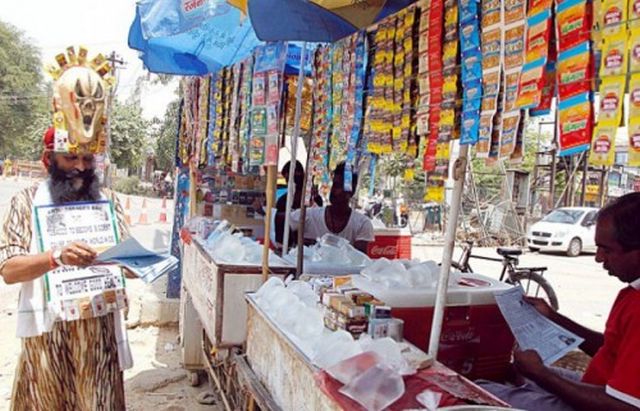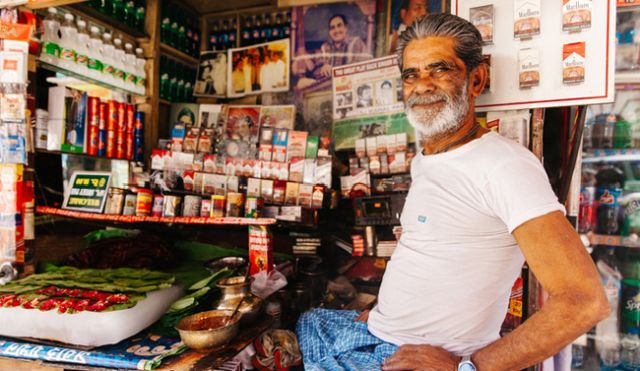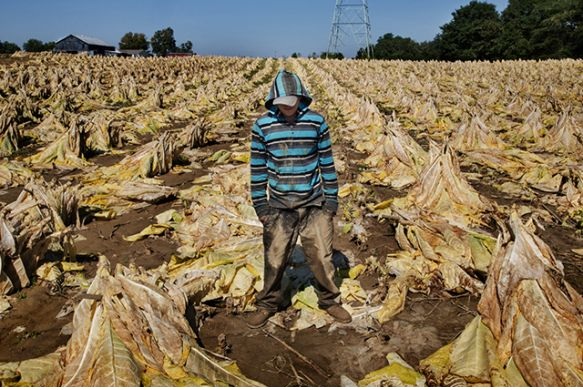
by admin | May 25, 2021 | Opinions
 By Siddhartha Upadhyay,
By Siddhartha Upadhyay,
Let me start by saying that I don’t want to sound a fanatic, for I don’t suggest anything that I can’t do myself. I quit smoking recently. And that’s no small feat. Tobacco is the most common form of addiction and one of the most harmful as well, much more than the dreaded cannabis or for that matter Ecstasy, let alone alcohol.
If, and I know it’s a big if, alcohol is consumed in moderation at a decent pace, half an hour for a peg, it’s actually medicinal. But there’s no safe amount of consumption of tobacco products. And for a young country like India, where half of the population is below 25 years of age, tobacco is doom. The greatest challenge before India as a nation is to exploit the incredible demographic potential, and inculcating a sports culture is the most effective way of doing it. Tobacco is the surest and easiest way of squandering it.
Simply, tobacco is a significant public health hazard, and something urgently needs to be done to discourage people from tobacco consumption. Just to give an idea of the enormity of the problem, globally, tobacco kills more people than tuberculosis, HIV/AIDS and malaria combined.
Remember, smoking a cigarette is just one of many ways of consuming tobacco. The consumption of smokeless tobacco in the form of snuff, chewing tobacco, tobacco leaf and gutkha is widespread amongst all age groups in India. There’s no escape, every second Indian is hooked on to one or the other form of tobacco consumption, and more often than not, it contributes to oral submucosal fibrosis, or OSF, is an established fact.
More Indians chew tobacco than smoke cigarettes or beedis, the figures are 26 per cent and 14 per cent, respectively, according to the Indian government and the World Health Organisation’s Global Adult Tobacco Survey of 2009-2010. Not surprisingly, nearly 80 per cent of oral cancer patients are tobacco users.
Recently the Indian Journal of Medical of Pediatrics published a study by Gauravi Mishra, Sharmila A. Pimple and Surendra S. Shastri that pointed to the fact that India is the second-largest consumer of tobacco globally, and accounts for approximately one-sixth of the world’s tobacco-related deaths. The Global Youth Tobacco Survey paints a grim picture of India. It was carried out amongst students of classes 8, 9 and 10, or roughly of the 13-16 age group. It was found that 15 per cent of students used tobacco products, mostly chewing tobacco (nearly 80 percent).
Despite this, not much has been done to curtail tobacco consumption. One of the main reasons is that the tobacco industry is fairly influential. It has been boasting about its contribution to the Indian economy at large by generating employment in the agriculture and manufacturing sectors, and revenues in the form of exports and taxes, as a justification to be allowed to play with the health of people. But it doesn’t need rocket science to understand that the public health hazard caused by tobacco outweighs all economic benefits many times over.
In the past, many states have tried to ban chewing tobacco but with little success. Take the case of gutka, a concoction of raw betel nut mixed with tobacco, which has been banned for some years now. To circumvent this, many tobacco companies started selling gutka discreetly, by selling pan masala paired with a separate sachet of tobacco. Though this may seem harmless, tobacco sold in small portions in a sachet actually facilitates its use primarily amongst teenagers. Many celebrities, from the film industry to sports, campaign for tobacco products, in spite of repeated persuasion against doing so. Tobacco, sadly, has become an integral part of life in cities and villages.
I specialise in youth outreach programmes by way of sports. And tobacco consumption is a great impediment in the objective of creating a healthy society committed to playing sports. Children and the unemployed youth are hard-pressed for money, and their consumption of tobacco products is highly susceptible to strong fiscal measures.
The availability of tobacco products in smaller quantities, in sachets and cigarettes sold by individual sticks, make it accessible to all, even children. Ideally, the government should ban the consumption of tobacco. But, till the time it’s done, at least the government should ensure two things. One, that 18 years and below are not to be sold any tobacco product. And two, the sale of tobacco products in small quantities, especially sachets which cost merely Rs 5 to 10, should be banned at the earliest. This will effectively curtail the access of tobacco products to sub-adults.
No half measures will suffice in the fight against tobacco. Ban tobacco.
(Siddhartha Upadhyay is member of the Governing Body of the Sports Authority of India and Founder of STAIRS, an organisation dedicated to the uplift of sports. The views expressed are personal. He can be contacted at siddhartha@upadhyay.co)
—IANS

by admin | May 25, 2021 | Business, Medium Enterprise, News, Politics, SMEs
 New Delhi : Over 1,000 retailers of tobacco products on Thursday protested outside the Union Health Ministry office here, demanding reduction in the size of the graphical health warnings on cigarette packets.
New Delhi : Over 1,000 retailers of tobacco products on Thursday protested outside the Union Health Ministry office here, demanding reduction in the size of the graphical health warnings on cigarette packets.
According to the retailers, protesting under the banner of Akhil Bharatiya Pan Vikreta Sangh representing around 75 lakh retailers across India, the smuggling of tobacco products has increased in the country ever since the graphic pictorial warnings came into existence as smuggled cigarette packets do not carry such warnings.
“Since the introduction of picture warning in India in May 2009 the smuggling has been increasing, as smuggled products are more appealing as they do not have warnings. We have observed that since May 2016, when the size of the health warnings on tobacco products have become larger i.e. 85 per cent on front and back of the pack, we have seen a huge spurt in the availability of smuggled cigarettes. The smuggled cigarettes have no picture warnings and give the impression to consumers that they are safer,” said a statement from the Akhil Bharatiya Pan Vikreta Sangh.
The protest comes days after the Karnataka High Court struck down the 2014 amendment rules that mandated pictorial health warnings to cover 85 per cent of tobacco product packages.
Earlier, farmers body Federation of All India Farmers Association had appealed to the government to bring down the pictorial warning from 85 to 40 per cent.
As part of the anti-tobacco policy, on September 22, the Union Health Ministry sent an advisory to the Rajasthan government preventing shops selling tobacco products from dealing in other products such as toffees, candy, chips, biscuits and soft drinks — products essentially meant for children.
The advisory says if tobacco vendors are found selling these products, their licence might get cancelled.
During the demonstration, the retailers from across the country silently protested outside the Nirman bhawan and later submitted a memorandum to the Union Health Minister J.P Nadda seeking roll back of pictorial warnings and order on preventing sale of non tobacco products.
“The anti-tobacco policy is being driven by vested interests promoted by various NGOs who are receiving huge sums of money from International players and who are also hand-in-glove with large retailers. The have also been targeting us, small retailers, to stop selling other items, pushing our customers to their large shops, closing out all our sources of earnings,” said Ram Ashrey Mishra, President, Akhil Bharatiya Pan Vikreta Sangh.
—IANS

by admin | May 25, 2021 | Commodities, Commodities News
 By Rupesh Dutta
By Rupesh Dutta
New Delhi : (IANS) Does the tax raised by finance minister have a direct impact on the livelihood of people, especially farmers? In the case of tobacco cultivators, it is very true, says their representative body.
According to the representatives, in all, 25 tobacco farmers have committed suicide in the last two years. They attribute this to a variety of factors which contribute to stress among tobacco growers, including the constant increase in excise duty on the product.
Forty-year-old Ventakeshwar Rao, a tobacco farmer in West Godavari district of Andhra Pradesh, committed suicide last year when he was unable to pay back his debt.
“Rao, like most other tobacco farmers who committed suicide, was struggling to pay off accumulated loans mostly taken from money-lenders to meet the growing cost of cultivation as well as urgent family needs,” B.V. Javare Gowda, president of the Federation of All India Farmers Associations (FAIFA), told IANS.
He said the problem faced by tobacco growers was more acute in Andhra Pradesh and Karnataka, two states with the highest tobacco cultivation in the country.
Gowda said high level of taxation ultimately impacts demand and it has an impact on the price that a farmer gets. For the government, which seeks to curb use of tobacco, the issue has its own set of complications.
Finance Minister Arun Jaitley last month announced an increase in excise duty on tobacco products by 10-15 percent in the 2016-17 budget.
According to Tobacco Institute of India, there were over two lakh tobacco growers in the country and the industry provides further employment to lakhs of others. Among the tobacco grown is FCV (Flue-Cured Virginia) – which is used in making cigarettes.
Minister of State for Health Shripad Yesso Naik admitted it was a controversial issue.
“We cannot directly support the tobacco industry as tobacco is injurious to health. At the same time we also cannot ignore the deaths of the tobacco farmers, The government will listen to their problems and see what can be done,” he said.
According to Tobacco Institute of India, exports are estimated to earn more than Rs.6,000 crore in foreign exchange with FCV tobacco alone contributing Rs.4,000 crore.
Gowda said that cultivation cost of one kg of tobacco is about Rs.100 and the price that a farmer gets has steadily come down from 115 per kg to Rs.85 per kg in the last two years.
He said tobacco farming was becoming unremunerative and the government decision to hike excise will further shrink demand.
While the industry faces high level of taxation, there are also complaints that the government was not strictly enforcing its policy of pictorial warnings on foreign cigarettes.
Murali Babu, general secretary of FAIFA, said the government should strictly enforce pictorial warnings on foreign cigarette brands.
Gowda said the health ministry has issued a directory to revise graphic health warnings on tobacco products which stipulates an increase from the existing warning of 40 percent of the pack front to 85 percent on both sides from April 1, 2016.
He said India was the third largest tobacco producer in the world but the production was fluctuating over the years, and added that many farmers have opted out of tobacco farming due to losses.
FAIFA has also sought intervention of Prime Minister Narendra Modi to look into their problems.
(Rupesh Dutta can be contacted at Rupesh.d@ians.in)



